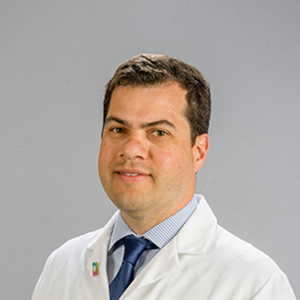It was about three years ago that Zac Brown Band’s founding member, bass player John Driskell Hopkins, began to notice he was having balance issues and stiffness in his hands and legs. He had trouble playing his instruments, including guitar, bass and ukulele. His symptoms got worse, and then he began slurring his speech.
In December of 2021, the 51-year-old was diagnosed with amyotrophic lateral sclerosis (ALS), a progressive neurodegenerative disease that affects nerve cells in the brain and spinal cord.
Hopkins went public with his diagnosis recently, bringing attention again to this disease that has no cure.
Lucas Meira-Benchaya, MD, a neurologist with Hartford HealthCare’s Ayer Neuroscience Institute at Hartford Hospital, said that while two or three years is a long time before receiving a definitive diagnosis of ALS, getting there can be a circuitous route.
Typically, his new patients come to him after they have first seen their primary care provider, and then a specialist. Depending on the initial symptoms, the specialist could be in orthopedics, digestive health, pulmonology or even another neurologist.
This is often the case because of ALS’s most common symptoms:
- Tripping and falling.
- Trouble swallowing.
- Inappropriate crying, laughing or yawning.
- Muscle cramps and twitching in arms, shoulders or tongue.
“It can really be a challenge to diagnose,” Meira-Benchaya said. “Someone will have difficulty swallowing, for example, and they will start with their primary care and then be referred to a gastroenterologist. Possible treatments won’t work, and eventually symptoms will spread, and that’s when they are referred to me.”
Shoulder issues can bring a patient to an orthopedic surgeon, “as they might think it’s a rotator cuff issue. Or if someone has foot drop (difficulty lifting the front part of the foot), that might be a nerve injury but is also a symptom of ALS.”
Once ALS is suspected, Meira-Benchaya said, there are tests to confirm the disease. The most common is electromyogram (EMG), which evaluates the electrical activity of muscles when they contract and when they’re at rest.
“We check more than 20 different muscles, including the tongue,” he said. “We also do an MRI to rule out anything that mimics ALS, like multiple sclerosis, stroke, brain infection or spinal nerve compression.”
Unfortunately, once the diagnosis is made, there isn’t much more medically that can be done. Meira-Benchaya said there are two medications, Riluzole (Rilutek) and Edaravone (Radicava). They can extend life expectancy by a few months or slow the decline in daily function, but the results are not significant.
Instead, a multidisciplinary team that includes the neurologist, physical therapist, occupational therapist, speech therapist, pulmonologist, social worker and a palliative care specialist, work together to prolong the patient’s quality of life. The average life expectancy after diagnosis is two to five years.



